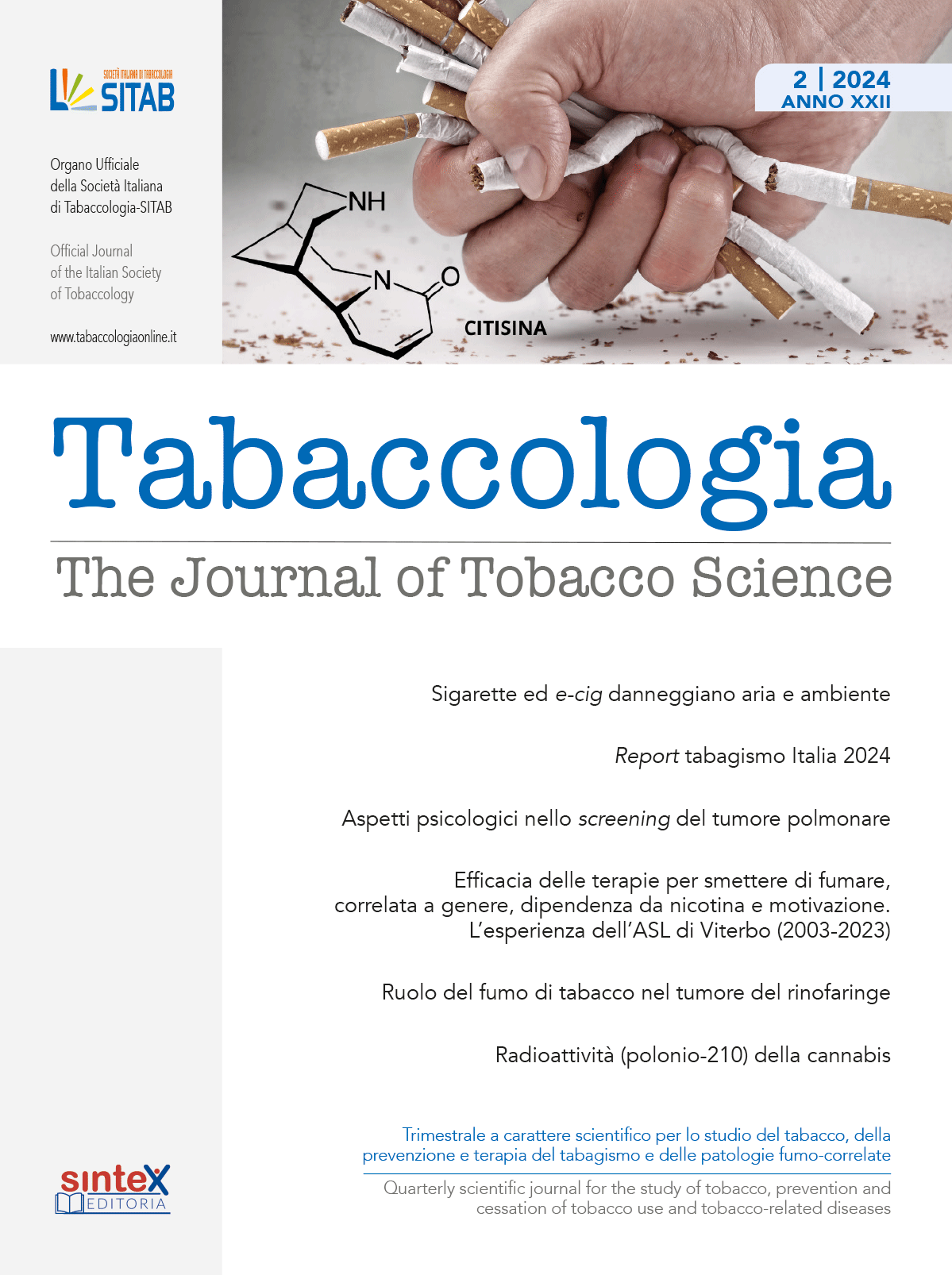|
Rassegna Stampa Scientifica Maggio 2023
|
“The Australian government said it wanted to crack down on the use of e-cigarettes in an effort to “reduce smoking and stamp out vaping” in one of the most sweeping tobacco regulatory moves in the country in years. The proposal, announced on Tuesday, would ban all single-use, disposable vapes; stop the importation of nonprescription vapes; require “pharmaceutical-like packaging”; reduce nicotine concentrations and amounts; and restrict certain flavors, colors and ingredients. The federal government would also work with states and territories to end the sale of vapes in convenience stores and other retail settings “while also making it easier to get a prescription for legitimate therapeutic use,” the Department of Health and Aged Care said in a statement…
“Mark Butler, the health minister, said [the federal government’s] long-term intentions were clear. “I want vaping to return to the purpose that we were told it was invented for, that is a therapeutic product to help long-term smokers quit… We were promised this was a pathway out of smoking, not a pathway into smoking. That is what it has become.”” [Remy Tumin. Australia Aims to ‘Stamp Out’ Vaping With Sweeping Regulations, New York Times. See also: Federal government to unveil $234 million crackdown on vaping, Sydney Morning Herald; National Tobacco Strategy 2023–2030, Australian Government, Department of Health and Aged Care]
“Australians already pay some of the highest tobacco tax in the world but a pack of cigarettes will become even dearer as the government aims to reduce the number of daily smokers to below 10% of the population by 2025 and below 5% by 2030. According to data collected by the Cancer Council of Victoria, the cost of a pack of 25 or 30 cigarettes has increased from a few dollars in the early 1990s to well over $40. Taxes on tobacco are already pegged to rises in the average wage but there will be a further 5% rise a year over the next three years.” [Josh Nicholas, Cait Kelly. Australia’s tobacco tax is among the highest in the world – and it’s about to get higher, The Guardian]
“Health Canada is "missing in action" on the regulation of e-cigarette flavours in Canada as youth vaping rates rise, health advocates say, and at a time when the vaping industry is expanding into highly addictive new devices that experts warn appeal directly to kids… Vaping has been marketed as an effective way to quit smoking, but e-cigarettes have never been approved as smoking cessation aids in Canada… David Hammond, a public health professor at the University of Waterloo and a leading Canadian youth vaping researcher, said the federal government implied they were either going to, or were considering, banning flavours, but "they've not done anything."…
“Meanwhile, the vaping industry has dramatically expanded its availability of flavours and recently shifted to new discrete, disposable e-cigarettes that hold thousands of pre-loaded puffs, don't require refilling or cartridges and are linked to a surge in youth vaping… "Over the last 15 years, there's been a growing divide [on regulating flavours] and Health Canada is not in the middle and is definitely on the pro-vaping side," said Cynthia Callard, the executive director of Physicians for a Smoke-Free Canada. "And the provincial governments, by and large, are on the more cautious side."” [Adam Miller. Health Canada 'missing in action' on youth vaping crisis, experts say, CBC News]
“There was no clue on the packaging of the vape about how to properly dispose of it. A tiny white symbol of a crossed-out bin is the only indication that the device shouldn’t just be placed with the rest of your rubbish… Currently 1.3m single-use vapes are thrown away every week in the UK, according to recycling group Material Focus. When littered, they can leach dangerous metals, battery acid, and nicotine into the environment. Plus, each vape contains on average 0.15g of lithium, which equates to 10 tonnes thrown away over a year in the UK – enough to make around 1,200 electric car batteries. Producing this metal is an environmentally costly process that uses huge amounts of energy and water.” [Emma Snaith. I tried to properly recycle a disposable vape. It did not go well, The Guardian]
“Although the full spectrum of cardiovascular and cardiometabolic consequences of e-cig use is not fully appreciated, data is beginning to show that e-cigs can cause both short- and long-term issues on cardiac function, vascular integrity and cardiometabolic issues… A cross-sectional analysis has shown that daily e-cig use was independently associated with higher odds of myocardial infarction (odds ratio, 1.79 [95% CI, 1.20–2.66]), as was daily conventional cigarette smoking (odds ratio, 2.29 [95% CI, 2.29–3.24])… Acute exposures (2 weeks) to e-cigs showed cardiac function changes via echocardiography… [E]-cig effects on the cardiovascular and metabolic outcomes of individuals with comorbidities are of paramount concern when considering the relative and absolute risks of e-cig use in these individuals.”
Electronic Nicotine Delivery Systems and Cardiovascular/Cardiometabolic Health
Circ Res. 2023 Apr 28;132(9):1168-1180. Epub 2023 Apr 27.
Matthew J Mears, Harrison L Hookfin, Priya Bandaru, Pablo Vidal, Kristin I Stanford, Loren E Wold
https://www.ahajournals.org/doi/full/10.1161/CIRCRESAHA.123.321565
https://www.ahajournals.org/doi/epub/10.1161/CIRCRESAHA.123.321565
Note: Open Access.
“Our results demonstrate that smoking EC [electronic cigarettes] is associated with a significant increase in cardiovascular hemodynamic measures and biomarkers. Our findings can aid policymakers in making informed decisions regarding the regulation of EC to ensure public safety.”
Association of Electronic Cigarette Exposure on Cardiovascular Health: A Systematic Review and Meta-Analysis
Current Problems in Cardiology
Available online 22 April 2023, 101748
Tariq Jamal Siddiqi, Ahmed Mustafa Rashid, Ahmed Kamal Siddiqi, Anusha Anwer, Muhammad Shariq Usman, Hifza Sakhi, Aruni Bhatnagar, Naomi M. Hamburg, Glenn A. Hirsch, Carlos J. Rodriguez, Michael J. Blaha, Andrew P DeFilippis, Emelia J. Benjamin, Michael E. Hall
https://www.sciencedirect.com/science/article/abs/pii/S0146280623001652
“Overall, 38.8% of the sample reported intent to discontinue using their e-cigarette if tobacco and menthol-flavored e-liquid were the only options available, whereas 70.8% would discontinue under a tobacco-only product standard… Conclusions: Results indicate potential for flavor restrictions to reduce use of e-cigarettes among AYAs [adolescents and young adults] and suggest that a tobacco flavor product standard may result in the greatest discontinuation of use.”
Adolescent and Young Adult Response to Hypothetical E-Liquid Flavor Restrictions
Journal of Studies on Alcohol and Drugs, 84(2), 303–308 (2023).
Published Online: May 03, 2023
Natasha K. Sidhu, William V. Lechner, Sam N. Cwalina, Lauren Whitted, Sabrina L. Smiley, Jessica L. Barrington-Trimis, Junhan Cho, Theodore L. Wagener, Adam M. Leventhal, & Alayna P. Tackett
https://www.jsad.com/doi/full/10.15288/jsad.21-00466
https://www.jsad.com/doi/epdf/10.15288/jsad.21-00466?role=tab
Note: Open Access.
Canada will soon require health warnings to be printed directly on individual cigarettes, making it the first country to implement this kind of measure aimed at reducing tobacco usage. Details of the new regulations were announced on Wednesday, which was World No Tobacco Day. The regulations take effect on Aug. 1 and will be implemented through a phased approach over the next year… King size cigarettes are set to be the first to feature the warnings and will be sold by Canadian retailers by the end of July 2024, followed by regular size cigarettes and little cigars with tipping paper and tubes by the end of April 2025. The government said the new regulations are part of its strategy to reach a target of less than five per cent tobacco use in the country by 2035…
“Other measures the government is taking include strengthening and updating health-related messages on tobacco product packages, extending the requirement for health-related messaging to all tobacco product packages, and implementing the periodic rotation of messages.” [Noushin Ziafati. Video: Canada is first to require health warnings printed on individual cigarettes, CTV News. See also: Every Canadian cigarette will soon carry a health warning, BBC News; Canada becomes first country to require health warnings on individual cigarettes, Toronto Star; Cigarette warning labels are about to get even harder to ignore in Canada, CBC News; Des avertissements liés au tabagisme bientôt imprimés sur chaque cigarette, Radio-Canada; Canada to become first country in the world to require health warnings on individual cigarettes, Health Canada]























